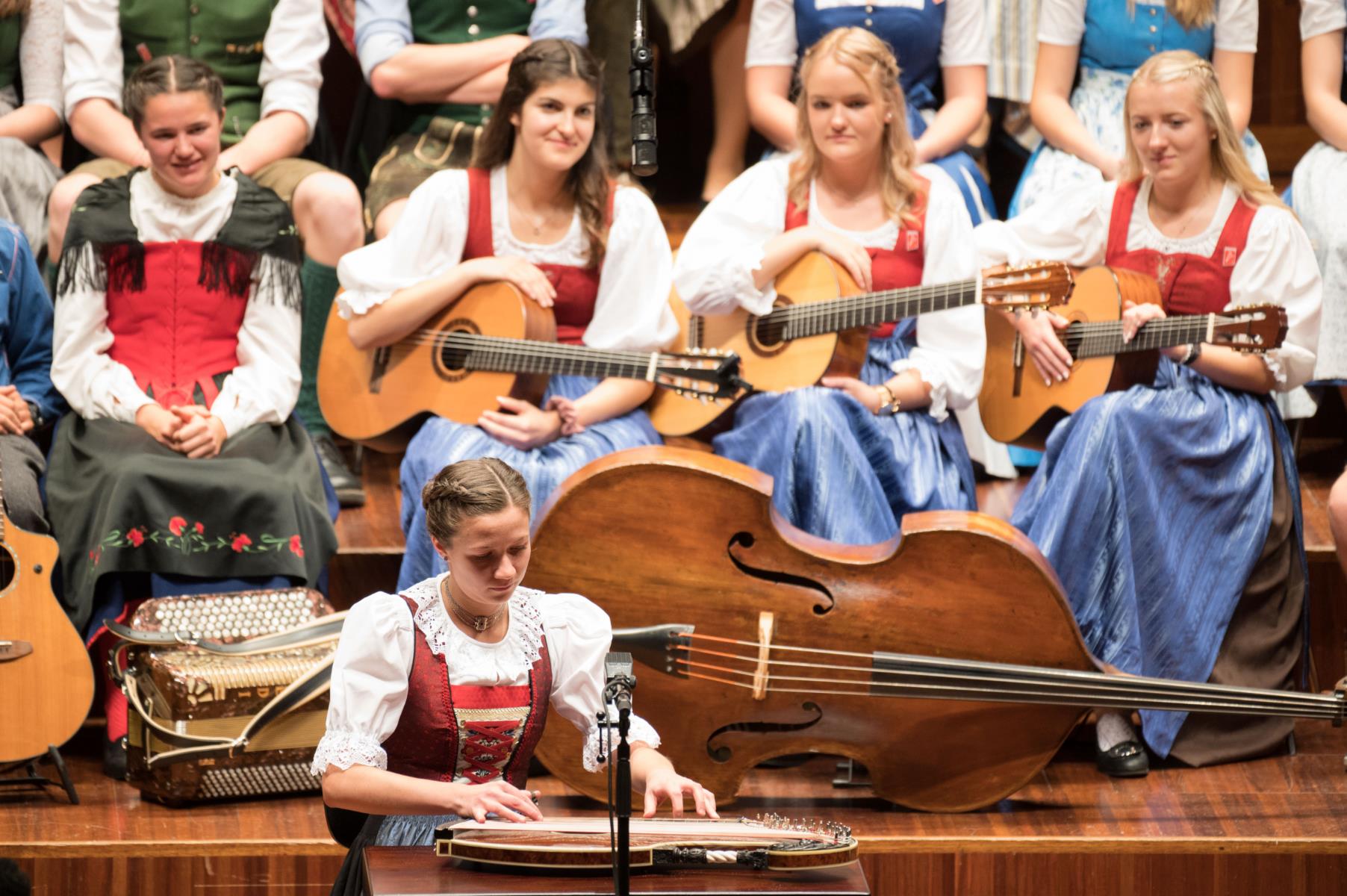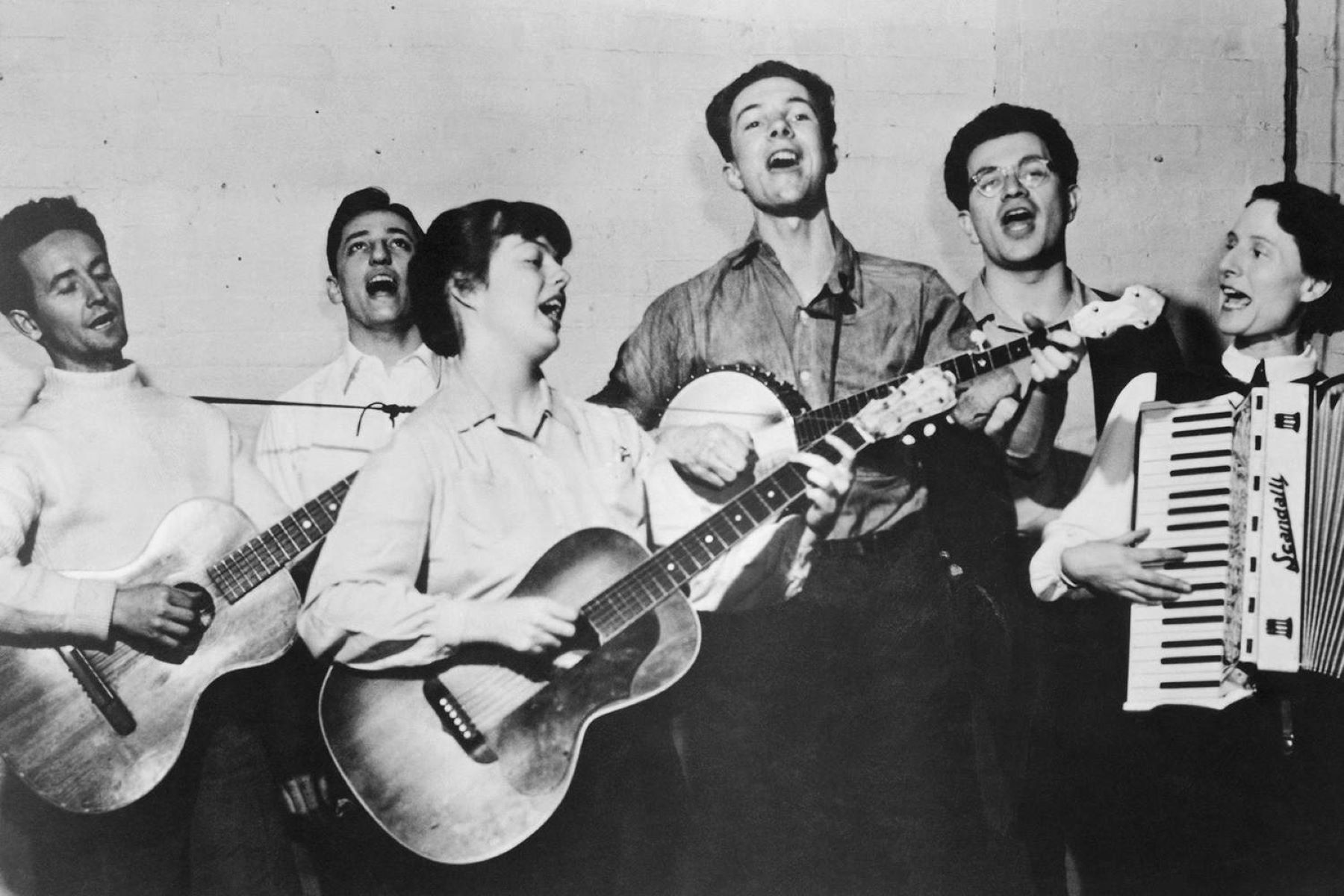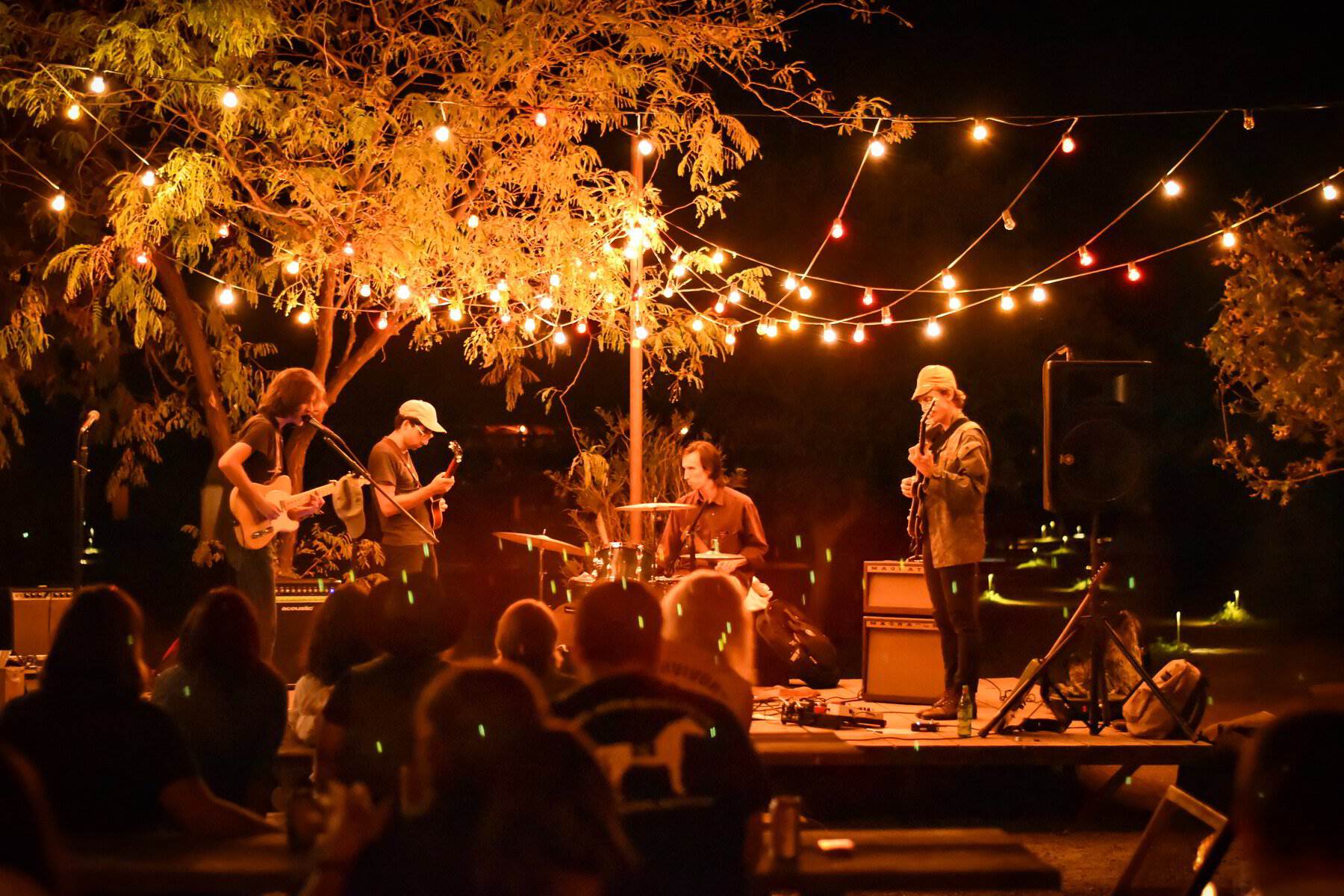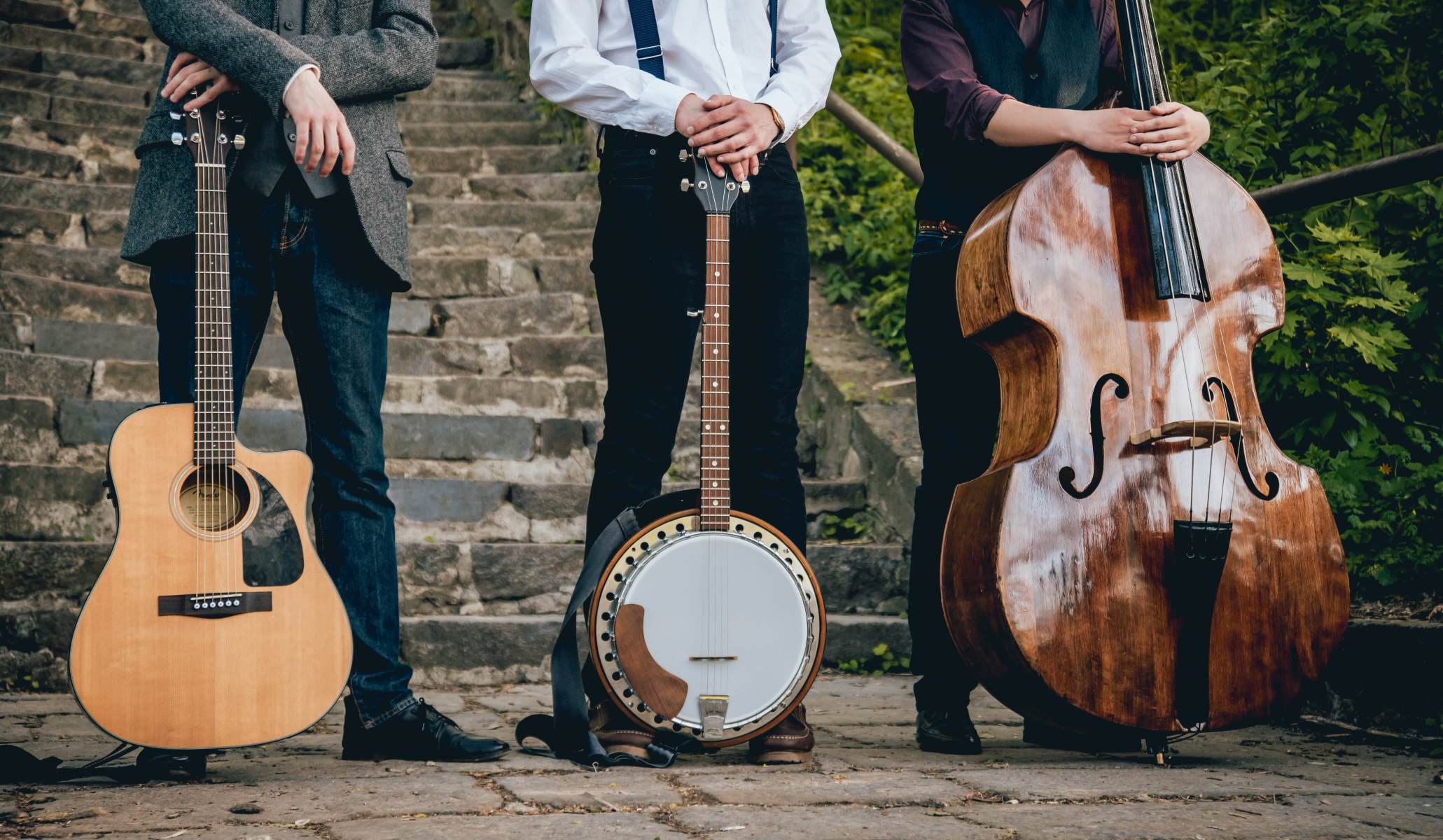

Folk
What Is A Folk Ballad?
Published: November 5, 2023
Discover the rich tradition of folk ballads and explore the captivating stories and melodies that have been passed down through generations. Learn about the origins, themes, and significance of this timeless genre.
(Many of the links in this article redirect to a specific reviewed product. Your purchase of these products through affiliate links helps to generate commission for AudioLover.com, at no extra cost. Learn more)
Table of Contents
Introduction
Folk ballads are an integral part of traditional and oral storytelling, encapsulating the essence of cultural heritage and historical narratives. These timeless musical compositions have been passed down through generations, preserving the rich cultural traditions and historical events of various communities. Rooted in the collective experiences of ordinary people, folk ballads have a distinctive charm that resonates with audiences across time and space.
In their simplest form, folk ballads are narrative songs that recount stories of love, tragedy, heroism, and everyday life. They offer a unique glimpse into the cultural, social, and historical context of a particular era or region. The true beauty of folk ballads lies in their ability to transcend time, captivating listeners with their universal themes and emotional depth.
Whether sung by traveling troubadours, shared in small communities, or recorded for posterity, folk ballads have been cherished for centuries. They have served as a means of transferring knowledge, preserving history, and fostering a sense of identity. The melodies and lyrics of these traditional songs capture the collective memory and wisdom of the people, providing a unique insight into their values, struggles, and triumphs.
Throughout history, folk ballads have played a crucial role in connecting individuals to their cultural heritage. They have acted as a voice for the marginalized, telling stories that might otherwise have been forgotten. Folk ballads have provided a platform for the expression of emotions, ideas, and social commentary, encapsulating the essence of a community’s shared experiences.
In this article, we will explore the definition, characteristics, origins, themes, structure, and importance of folk ballads. We will delve into the captivating world of these musical narratives, examining their enduring appeal and impact on culture and society.
Definition of a Folk Ballad
A folk ballad is a narrative song that has been passed down within a community through oral tradition. It is typically characterized by its simple melody, repetitive structure, and storytelling lyrics. These traditional songs are often created anonymously and reflect the collective experiences, values, and emotions of the people who sing them.
Unlike composed songs that are attributed to a specific writer, folk ballads emerge organically over time, evolving and adapting with each retelling. They are deeply rooted in the cultural heritage of a community and serve as a form of communal storytelling. Folk ballads offer a window into the past, shedding light on historical events, cultural practices, and societal issues.
One of the distinguishing features of a folk ballad is its narrative structure. These songs often tell a story, whether it be a tragic love affair, a heroic adventure, or a historical event. The lyrics are crafted in a way that captures the listener’s imagination and transports them into the world of the tale being told. The themes explored in folk ballads range from love and loss to social justice and political rebellion.
Another characteristic of folk ballads is their simplicity. The melodies are usually straightforward and easy to remember, allowing for easy participation and transmission among the community. The repetitive nature of the lyrics also contributes to their memorability. This simplicity ensures that folk ballads can be enjoyed and shared by people of all ages, regardless of musical training or background.
It’s worth noting that folk ballads can vary greatly across different cultures and regions. Each community may have its own unique style and repertoire of songs, reflecting the distinct traditions and stories of that particular group. This diversity adds to the richness and complexity of folk ballads as a form of cultural expression.
In essence, a folk ballad is a storytelling song that embodies the spirit and history of a community. It is a powerful medium through which narratives are preserved, transmitted, and celebrated. These traditional songs serve as a testament to the enduring power of oral tradition and the importance of collective memory.
Characteristics of a Folk Ballad
Folk ballads possess several distinct characteristics that set them apart from other forms of music. These qualities contribute to their timeless appeal and enduring popularity:
1. Narrative Structure: A defining characteristic of a folk ballad is its narrative structure. These songs are essentially stories set to music, recounting events, adventures, or emotions. The lyrics follow a linear progression, often presenting a clear beginning, middle, and end. By telling a story, folk ballads engage listeners and transport them into the world of the song.
2. Oral Tradition: Folk ballads are primarily transmitted through oral tradition. They are passed down from one generation to another through verbal communication rather than written notation. This process allows for variations and adaptations to occur naturally over time, reflecting the cultural nuances and individual interpretations of different performers.
3. Anonymous Authorship: Most folk ballads lack a known author or composer. Instead, they emerge from the collective creativity of a community. This anonymity allows the songs to be easily embraced and personalized by singers and listeners alike. The focus is on the story and the emotions it evokes rather than the recognition of individual artistic contributions.
4. Simple Melodies: Folk ballads typically feature simple and memorable melodies. These melodies often consist of a limited range of notes, making them accessible to a wide audience. The simplicity of the melodies allows listeners to easily sing along and participate in the storytelling experience.
5. Repetitive Lyrics: The lyrics of folk ballads often feature repetition of certain phrases or lines. This repetition serves multiple purposes, including aiding memorization, emphasizing key themes or emotions, and creating a rhythmic structure. The repetitive nature of the lyrics also encourages audience participation and engagement during live performances.
6. Universal Themes: Folk ballads explore universal themes and emotions that resonate across cultures and time periods. Love, loss, bravery, betrayal, and the human condition are common subjects found in these songs. They touch upon the shared experiences and emotions that define the human experience, making them relatable and enduring.
7. Cultural and Historical Significance: Folk ballads provide valuable insights into the cultural and historical context of a community. They serve as a repository of traditions, values, and historical events, preserving collective memory and heritage. Through these songs, listeners gain a deeper understanding of the cultural nuances, values, and struggles of the people who composed and performed them.
Folk ballads embody the spirit of storytelling, community, and cultural heritage. Their narrative structure, oral tradition, simplicity, and universal themes contribute to their enduring appeal. These songs continue to captivate and inspire listeners, bridging the gaps between generations and cultures.
Origins of Folk Ballads
The origins of folk ballads can be traced back to ancient times, with roots in various cultures and civilizations. While it is challenging to pinpoint the exact beginnings of these songs, their development can be attributed to a combination of historical, cultural, and social factors:
1. Oral Tradition: The oral tradition played a significant role in the creation and dissemination of folk ballads. In societies where writing and literacy were not prevalent, storytelling through song was a primary means of transmitting history, legends, and cultural knowledge. These songs were passed down orally from one generation to the next, ensuring their continuity and preservation.
2. Folklore and Mythology: Folk ballads often draw inspiration from folklore and mythology. Many of these songs incorporate mythical characters, supernatural elements, and legends passed down through generations. They serve as a medium for preserving cultural traditions and beliefs surrounding supernatural beings, heroes, and legendary events.
3. Historical Events and Social Commentary: Folk ballads often emerged as a response to historical events and societal issues. They provided a means for ordinary people to share their experiences, express their opinions, and shed light on injustices. Events such as wars, revolutions, and societal changes often served as catalysts for the creation of new ballads.
4. Migration and Travel: As people moved across regions and continents, they carried their stories, traditions, and music with them. The interaction between cultures and the exchange of ideas and experiences resulted in the evolution and fusion of folk ballads. Variations and adaptations of traditional songs emerged as different communities added their own unique flavors and perspectives.
5. Improvisation and Adaptation: Folk ballads were not fixed entities but rather flexible forms of artistic expression. As they were predominantly passed down through oral tradition, each performance had room for improvisation and adaptation by the singer. This allowed for the integration of new verses, changes in melody, and alterations reflecting the specific context of the performance.
6. Cross-cultural Influences: Over time, folk ballads have been influenced by various cultures and musical traditions. Through trade routes, conquests, and cultural exchanges, different musical styles and themes blended, giving rise to diverse and culturally rich ballads. This cross-pollination continues to contribute to the vibrant and ever-evolving nature of folk ballads.
Folk ballads have deep roots in the collective memory, tradition, and experiences of communities across the world. By examining their origins, we gain insight into the cultural, historical, and social contexts that have shaped and influenced these captivating musical narratives.
Themes in Folk Ballads
Folk ballads explore a wide range of themes, reflecting the hopes, fears, joys, and struggles of the communities that sing them. These songs serve as a mirror of human experiences, offering a glimpse into the complexities of life. While the specific themes can vary across different ballads, there are several common threads that emerge:
1. Love and Romance: Love and romance are recurring themes in folk ballads. These songs often tell tales of passionate love affairs, tragic relationships, and unrequited love. They explore the depths of human emotions, capturing the ecstasy and anguish that come with matters of the heart.
2. Tragedy and Loss: Many folk ballads center around tragic events and heartbreaking stories. These songs delve into themes of loss, death, and grief. They often depict the struggles of individuals faced with adversity or the consequences of their actions, evoking feelings of empathy and compassion.
3. Heroism and Adventure: Folk ballads frequently celebrate acts of heroism, bravery, and adventure. These songs recount stories of legendary figures, warriors, and adventurers who overcome obstacles and achieve great feats. They inspire listeners with tales of courage, honor, and the triumph of the human spirit.
4. Social Injustice and Rebellion: Folk ballads have long served as a vehicle for expressing social commentary and reflecting on issues of injustice and oppression. These songs shed light on societal inequalities, advocate for the rights of the marginalized, and recount stories of rebellion against oppressive systems.
5. Historical Events and Legends: Many folk ballads are rooted in historical events, both significant and mundane. They provide a unique perspective on historical moments, including wars, revolutions, and notable events. These songs often blend historical facts with legends and myths, keeping both alive in the collective memory.
6. Work and Labor: Folk ballads often portray the struggles and joys of everyday work and labor. They reflect the hardships faced by workers in different occupations, such as farmers, miners, sailors, and factory workers. These songs capture the tireless spirit, resilience, and sense of community among those engaged in laborious tasks.
7. Nature and the Environment: Nature and the natural world frequently serve as a backdrop and source of inspiration in folk ballads. These songs depict the beauty of landscapes, the changing seasons, and the connection between humans and the environment. They celebrate the wonders of nature and the rhythms of the natural world.
These themes in folk ballads resonate with audiences across time and cultures. They provide a glimpse into the universal aspects of the human experience while also capturing the unique perspectives, values, and challenges of specific communities. Folk ballads serve as a testament to the power of storytelling to touch our hearts, provoke thought, and inspire change.
Structure of a Folk Ballad
The structure of a folk ballad follows a distinct pattern, characterized by its simplicity and repetitive nature. While there can be variations in structure across different ballads, the general framework remains consistent:
1. Verses: Folk ballads are typically composed of several verses, each containing a specific segment of the story being told. Each verse is a self-contained unit that contributes to the overall narrative. The number of verses may vary depending on the length and complexity of the ballad.
2. Refrain or Chorus: A refrain or chorus may be present in certain folk ballads. This repeating section appears after each verse and serves as a focal point, emphasizing a key theme or emotion of the song. The refrain allows for audience participation and reinforces the central message of the ballad.
3. Rhyme and Meter: Folk ballads often employ a simple rhyme scheme and meter. The lines within a verse may rhyme with each other, creating a musical and rhythmic flow. The meter dictates the rhythm and stresses within each line, giving the ballad its distinctive musicality.
4. Repetition: Repetition is a significant element of the structure in folk ballads. Certain lines or phrases may be repeated throughout the song, creating a sense of familiarity and reinforcing key themes or emotions. This repetition aids in memorization and audience participation during performances.
5. Narrative Progression: The structure of a folk ballad usually follows a linear narrative progression. The verses are arranged in a logical sequence, telling the story from beginning to end. This narrative approach allows for the development of characters, events, and emotions, engaging the listener in the unfolding tale.
6. Melodic Variation: While not strictly part of the formal structure, melodic variation is an essential aspect of folk ballads. The melody of the song may change slightly from verse to verse or exhibit variations in different renditions. This flexibility allows for individual performers to put their unique stamp on the song while still maintaining the core structure.
Overall, the structure of a folk ballad is designed to facilitate storytelling and evoke emotions. The simplicity and repetitive nature of the verses and refrains make these songs accessible and memorable. This structure, combined with the powerful storytelling and emotive lyrics, is what makes folk ballads compelling and enduring forms of musical expression.
Examples of Famous Folk Ballads
Folk ballads have produced some iconic and enduring songs that continue to resonate with audiences around the world. These songs have stood the test of time, capturing the imagination and hearts of listeners. Here are a few examples of famous folk ballads:
1. “Barbara Allen”: This traditional English ballad tells the story of a young man who falls in love with Barbara Allen. When he becomes ill and confesses his love to her, she rejects him, and he tragically dies. Barbara later regrets her decision and dies of a broken heart. “Barbara Allen” has been recorded by numerous artists and remains a beloved folk ballad.
2. “The House of the Rising Sun”: Originating from American folk tradition, this ballad recounts the tale of a life gone astray in the infamous house of ill repute “The Rising Sun.” The song has been covered by various artists, including The Animals, and has become an anthem for both the folk and rock music genres.
3. “Scarborough Fair”: Dating back to the 17th century, “Scarborough Fair” is a haunting ballad that tells the story of a man who sets several impossible tasks for his lover to complete. The song gained popularity in the 1960s when it was recorded by Simon and Garfunkel, introducing it to a new generation of listeners.
4. “The Ballad of John Henry”: An American folk ballad, this song narrates the legendary tale of John Henry, an African American steel driver who famously raced against a steam-powered drill to prove the value of human labor. The ballad has been interpreted by numerous artists and serves as a symbol of resilience and determination.
5. “Matty Groves”: Originating from the British Isles, “Matty Groves” tells the story of a tragic love affair between the young Matty Groves and Lady Barnard, resulting in a violent confrontation with her husband. This ballad has been recorded by various artists, often showcasing different interpretations of the story.
6. “The Bonnie Banks o’ Loch Lomond”: A Scottish ballad, this song reflects the heartache and yearning of two imprisoned Jacobite soldiers during the political turmoil of the 18th century. It has since become one of Scotland’s most beloved folk songs, often performed at gatherings and events celebrating Scottish culture.
These examples represent just a fraction of the vast repertoire of famous folk ballads. Each carries a unique story, emotion, and cultural significance, resonating with listeners across generations. They serve as a testament to the power of folk ballads in capturing the essence of human experiences and expressing the collective spirit of a community.
Importance of Folk Ballads
Folk ballads hold immense cultural, historical, and social significance. They play a crucial role in preserving and transmitting collective memory, fostering a sense of identity, and sparking conversations about important societal issues. Here are some key reasons why folk ballads are important:
1. Cultural Heritage: Folk ballads serve as a repository of cultural traditions, values, and beliefs. They reflect the unique perspectives and experiences of a particular community or region. By preserving these songs, we ensure the continued appreciation and understanding of our cultural heritage, enriching our sense of identity and connection to the past.
2. Oral Tradition: Folk ballads are passed down through oral tradition, ensuring the continuity of storytelling across generations. This form of transmission allows for flexibility, adaptations, and personal interpretations. It reinforces the importance of communal engagement and active participation, creating a shared experience that brings people together.
3. Historical Narratives: Folk ballads often recount historical events, offering valuable insights into the social, political, and cultural contexts of a specific time period. They provide alternative perspectives on historical events, shedding light on marginalized voices and untold stories. As a result, folk ballads contribute to a more comprehensive and nuanced understanding of history.
4. Social Commentary: Folk ballads have long served as a means of expressing social commentary and reflecting on societal issues. They give voice to the struggles of the marginalized, advocate for justice, and challenge prevailing norms and injustices. These songs have the power to provoke thought, inspire activism, and promote social change.
5. Emotional Resonance: Folk ballads tap into universal emotions and experiences, forging an emotional connection with listeners. The heartfelt lyrics, melodies, and storytelling allow individuals to relate to the joys, sorrows, triumphs, and struggles depicted in the songs. This emotional resonance contributes to the enduring appeal and impact of folk ballads.
6. Community and Identity: Folk ballads foster a sense of community and shared identity. They provide a sense of belonging and connection to a larger collective. By singing and sharing these songs, communities strengthen their ties and create a space for cultural exchange and celebration.
7. Continuation of Tradition: By keeping the tradition of folk ballads alive, we honor the contributions of past generations and provide a foundation for future cultural expressions. As new generations interpret and adapt these songs, they ensure that the spirit of folk ballads lives on, evolving to reflect the changing times while preserving the essence of the original tradition.
The importance of folk ballads lies in their ability to bridge the past and present, preserve cultural heritage, and inspire reflection and action. These timeless songs continue to resonate with audiences, reminding us of the power of storytelling, the strength of community, and the richness of our shared human experiences.
Conclusion
Folk ballads are not merely songs; they are windows into the rich tapestry of human experiences, emotions, and traditions. Through their narrative structure, oral transmission, and universal themes, folk ballads have played a profound role in preserving cultural heritage, sharing historical narratives, and sparking conversations about societal issues. These songs connect us to our roots, allowing us to appreciate the traditions and values that have shaped us.
From love and tragedy to heroism and social justice, folk ballads capture the essence of the human condition. They evoke a sense of nostalgia, empathy, and connection, bridging generations and cultures. The simplicity of their melodies and repetitive lyrics make them accessible to all, inviting audience participation and engagement.
Folk ballads have traversed time and space, evolving and adapting to suit different regions and cultures. They have been passed down from one generation to the next, ensuring the continuity of communal storytelling and the preservation of our collective memory. They serve as vessels of history, shedding light on the untold stories and marginalized voices that may otherwise be forgotten.
These songs remind us of the power of oral tradition, encouraging us to embrace our cultural heritage and celebrate our identities. They provide a platform for individual and collective expressions, allowing us to reflect on societal issues and contemplate the possibilities of social change. Folk ballads inspire us to be active participants in our communities and advocates for justice and equality.
In an increasingly fragmented and fast-paced world, folk ballads offer moments of connection and contemplation. They remind us of the resilience of human spirit, the beauty of our natural surroundings, and the importance of preserving our cultural legacies. Folk ballads serve as a testament to the enduring power of storytelling, showcasing the timeless relevance of these age-old songs.
As we continue to sing and share folk ballads, we ensure the survival of these cherished traditions. By embracing the beauty and diversity of folk ballads, we gain a deeper appreciation for the rich heritage that we are custodians of. Let us carry forward the legacy of these songs, passing them on to future generations to keep the flame of folk ballads burning bright.











